PhD student Carolyn Bushell explores how narratives of exile and migration shaped the formation and acquisition of works featured in Leicester’s collection of modern German art. She focuses in particular on women artists and patrons, and highlights how debates on gender have contributed to the reception of these artists’ works and their subsequent display in the collection.
Collection: Leicester’s German Expressionist Collection;
Download a PDF of this article
Keywords: Migration, Exile, Women Artists, Thekla Hess, Rosa Schapire, Germany, Expressionism
In March of this year, an official press statement was released by Leicester City Council acknowledging the ‘rediscovery’ and essentially the authenticity of five Spanish American viceroyalty paintings, known as casta paintings, originating from eighteenth-century Mexico [1]. The original artworks have been affirmed by art expert Ilona Katzew to be ‘an exceptional discovery of complex paintings of the castas pictorial genre,’ that can conceivably be attributed to Juan Rodriguez Juarez [2]. The five casta paintings each depicting interracial mixing due to widespread marriages between settlers and indigenous populations, had in fact been discovered thirteen years previously in the storage basement of the New Walk Museum and Art Gallery in Leicester [3]. However, the museum is perhaps better known for its collection of early twentieth-century German art, much of which was initially formed through exile and migration [4]. It is upon this outstanding collection that I wish to focus my attention in this article. If the five casta paintings have gone unnoticed for so long, what else amongst Leicester’s German art collection may have been overlooked, and what still merits ‘rediscovery’?
As far as exclusion or neglect are concerned, one need look no further than the way in which gender politics play out in relation to Leicester’s German art collection. The impetus for the collection originated with the loan – and the gallery’s subsequent purchase – of the Rote Frau (Red Woman) (1912) oil painting by Franz Marc (1880–1916) that was negotiated by the Jewish émigré, Thekla Hess (1884–1968). Hess was the surviving widow of a husband-and-wife partnership that during their early professional careers in Erfurt, had amassed over 4,000 contemporary artworks between the years 1918 and 1931. During their own lifetimes, their collection of German Expressionism was lauded one of the best that ‘ever existed’ [5]. After the death of her husband, Alfred, in 1931, Thekla Hess oversaw and safeguarded what would become the initial corpus of works that formed Leicester’s German art collection. Although she was a prominent and well-known Jewish woman, astonishingly, she remained in Germany and endured hostility and prejudice in the lead up to the Second World War. Hess managed to get artworks out of Germany in various guises disguised as loans to various exhibitions and institutions. It is also recorded that works were taken out of frames and rolled and hidden in pieces of furniture that were transported out of the country. However, Hess’s important role as a patron of art remains overlooked, partly, perhaps, because she was a woman [6]. Contributions to Leicester’s German artworks by two other remarkable women collectors, such as Margaret Fisher (1901–?), and the art historian and collector Rosa Schapire (1874–1954), have likewise garnered relatively little attention until more recently. In 2009 a biography was published in the German language, entitled Rosa. Eigenartig Grun: Rosa Schapire und Die Expressionisten (Rosa. Peculiarly Green. Rosa Schapire and the Expressionists) and art historian, Shulamith Behr has produced a number of articles specifically related to Schapire’s life and patronage, including in the publication, Visions of the Neue Frau [7]. In 1998, Behr contributed an article to the Institute of Germanic Studies Publication Keine Klage über England? Deutsche und Österreichische Exilerfahrungen in Großbritannien 1933-1945 (No complaints about England? German and Austrian Experiences of Exile in Great Britain 1933–1945) [8]. Most recently in 2022, Behr published Women Artists in Expressionism: From Empire to Emancipation, which dedicates a significant section to Schapire and explores the substantial donations that Schapire has made to British public art collections [9].
The section that follows discusses the influential contribution made firstly by Viennese private dealer and collector, Margaret Fisher. Fisher came from a commercial art background. She worked alongside her aunt, Lea Bondi, in the renowned ‘Würthle Galerie’ in Vienna. However, with the onset of the First World War and the Aryanisation of Austria in 1939, both Bondi and Fisher, who were Jewish, were forced to flee taking many of their artworks with them. Fisher joined a network of private collectors from the Jewish and émigré communities that ended up living in and around North London. Regrettably, Margaret Fisher’s exilic life in London remains obscure. Nothing further is known regarding her business dealings, and there is only scant correspondence in the Leicester Museum archives relating to the twenty-nine works that were either gifted by Fisher or purchased by Leicester museums. These include artworks, for example, by Käthe Kollwitz (1867–1945), Ernst Ludwig Kirchner (1880– 1938), Max Beckmann (1884–1950) and Georg Grosz (1893–1959). Crucially, it was as a result of these acquisitions that the Museum Service’s collecting policy was amended to actively acquire additional German artworks and expand upon their growing number of expressionist works, resulting in the pre-eminent collection that exists today [10]. The third figure who was of vital importance to the formation of Leicester Museum and Art Gallery’s German art collection is the previously mentioned art historian and collector, Rosa Schapire.
Schapire’s contribution to Leicester’s collection totals twenty-four works encompassing etchings, watercolours, woodcuts, and lithographs. It also includes eleven illustrated postcards that are hand-painted in pencil and watercolour by the artist, Karl Schmidt-Rottluff (1884–1976). These depict various landscapes and portraits that were personally sent to her by the artist. Her collection of works by Schmidt-Rottluff in particular was prodigious. Indeed, Schapire’s support of modern German art during her lifetime was so great that she was in fact the only woman to be made a ‘passive member’ of the expressionist art group known as ‘Die Brücke’ (The Bridge), of which Schmidt-Rottluff was also a member [11]. A highly educated and accomplished woman with a pre-disposition for languages, Schapire was one of the few women to pursue studies in art history at a time when it was a male-dominated field. Schapire believed that socialism and equality of the sexes was the way forward [12]. She was also depicted in portraits by both Schmidt-Rottluff and fellow Brücke member, Ernst Ludwig Kirchner. Schapire was able to get out of Germany in 1939, two weeks before the outbreak of the Second World War. She arrived in London with nothing but ten Marks and her Schmidt-Rottluff collection [13]. For the remainder of her life she would continue to advocate for German expressionism and in 1953, she opened the first British exhibition of Schmidt-Rottluff’s work – based in part on her collection – at Leicester Museum and Art Gallery. Schapire considered the exhibition to be one of the most important events of her life in England (fig.1) [14]. Just months later, she died of a heart attack in the Tate Gallery near the portrait Schmidt-Rottluff painted of her [15].
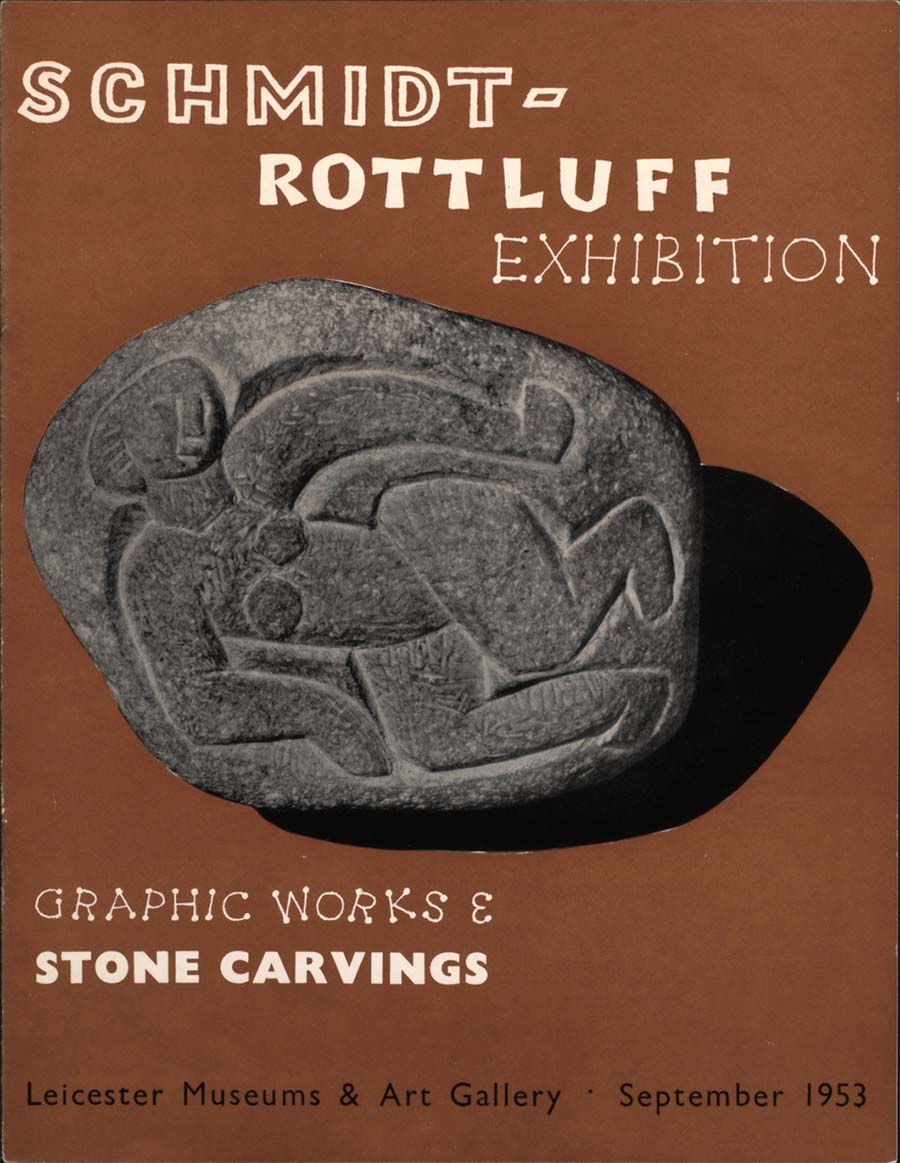 Fig.1 Karl Schmidt-Rottluff Exhibition: Graphic Works & Stone Carvings Exhibition Catalogue, Leicester Museums & Art Gallery 1953. © Image courtesy of Leicester Museums & Galleries.
Fig.1 Karl Schmidt-Rottluff Exhibition: Graphic Works & Stone Carvings Exhibition Catalogue, Leicester Museums & Art Gallery 1953. © Image courtesy of Leicester Museums & Galleries.
In addition to the women collectors that have contributed significantly to Leicester’s German art collection, there are works by overlooked artists such as Hedwig Weiss (1860–1923), Hedwig Marquardt (1884–1969), Hilde Goldschmidt (1897–1980), Luise Grimm [née Paetow] (1900–1991), and Margarete Klopfleisch (1911–1982). Some of the work these artists produced is interesting in that it not only engages with the subject of migration, but is also records the achievements of fellow women contemporaries. For example, Hedwig Weiss produced a little-known early portrait etching of Käthe Kollwitz, dated 1900, when Kollwitz was thirty-three years old (fig.2). It captures Kollwitz looking thoughtfully out at the viewer and was created by Weiss at a time after Kollwitz had produced what is one of her most acclaimed cycles of work – Ein Weberaufstand (The Weavers Revolt); an etching and aquatint series based on the Silesian weavers food riots in 1844. Kollwitz exhibited the graphic cycle at the Große Berliner Kunstausstellung (Great Berlin Art Exhibition) in 1898. Consequently, Max Liebermann (1847–1935) proposed that Kollwitz be nominated for a gold medal, only to have this rejected by Kaiser Wilhelm II, who considered bequeathing one to a woman, and a woman of ‘realist’ art, crossing the line. Of further note is the fact that this portrait etching was also one of the artworks that Leicester Museums purchased from Margaret Fisher.
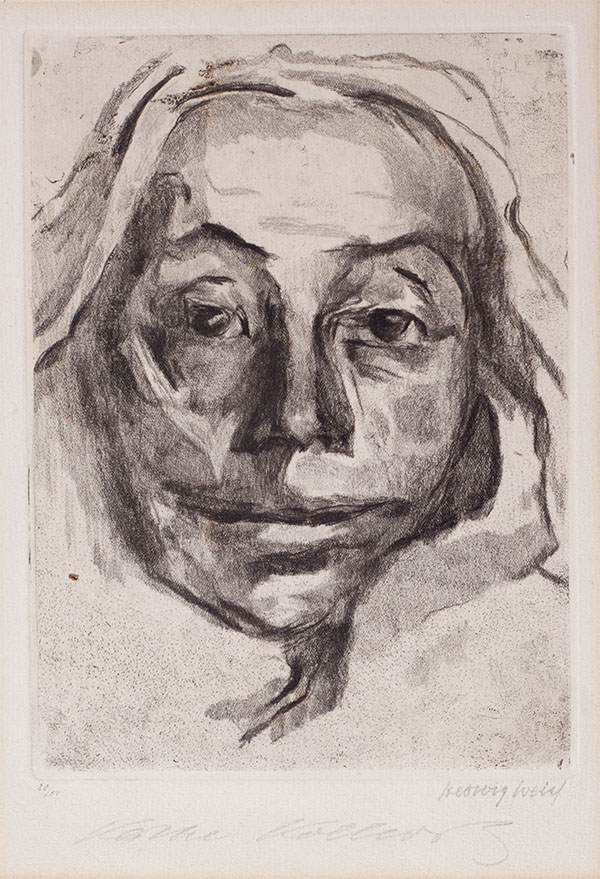 Fig.2 Hedwig Weiss. Bildnis Käthe Kollwitz/Portrait of Käthe Kollwitz (1900), etching. © Image courtesy of Leicester Museums & Galleries.
Fig.2 Hedwig Weiss. Bildnis Käthe Kollwitz/Portrait of Käthe Kollwitz (1900), etching. © Image courtesy of Leicester Museums & Galleries.
Within the German art collection there are a handful of works on paper by Hedwig Marquardt, some of which respond directly to the refugee condition. Marquardt studied in the Applied Art School in Magdeburg and then in Munich. By 1912 she was training to become an artist in Berlin under the expressionist, Lovis Corinth (1858–1925). However, like Kollwitz, when the National Socialists came to power in Germany, she did not leave the country. Instead, she managed to survive as a teacher in Hanover. In her watercolour and crayon image, Flüchtlinge (Refugees), we see a mother and father with their young child huddled in warm clothing. Each of the three figures depicted show varying degrees of resignation for their beleaguered circumstances (fig.3). Despite her position as an ‘inner émigré’ (a term used to describe those who remained in Germany, but distanced themselves from the political regime), the work shows a strong empathy with those people who were forced to leave. The date of the work is unknown. If it was produced during the 30s, however, it might be construed as a dissenting response to National Socialist terror.
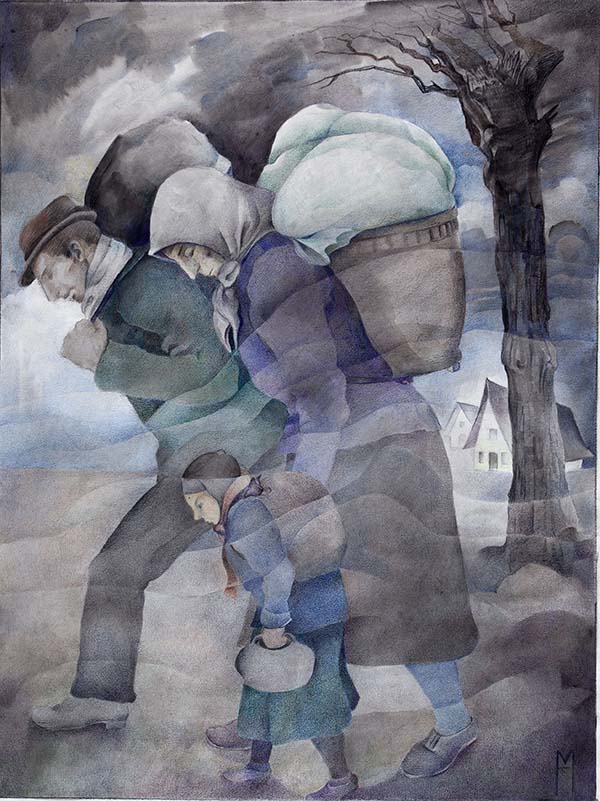 Fig.3 Hedwig Marquardt. Flüchtlinge/Refugee Family, undated, watercolour and crayon. © Image courtesy of Leicester Museums & Galleries.
Fig.3 Hedwig Marquardt. Flüchtlinge/Refugee Family, undated, watercolour and crayon. © Image courtesy of Leicester Museums & Galleries.
Additionally, a number of woodcuts by Luise Grimm are stylistically distinctive and potentially allude towards ‘inner’ disengagement under dictatorship. What makes them significant, in part, is the fact that the artist was predominantly known for painting and not printmaking. Leicester Museums have six woodcuts by Grimm in their collection, one of these, Mourning Figures – (c.1920s) (fig.4), depicts eight silhouetted figures in monotone ink on paper in various guises of distress and woe. Likewise, another woodcut by Grimm, owned by the Leicester Museums, entitled Moving Figures, again illustrates an indecipherable ‘hemming in’ of the figures and tangible sentiments of oppression. Grimm received an extensive artistic education and training, studying under artists Gertrud Nering, Ernst Mueller-Schoenefeld, and Johann Walter-Kurau in Berlin. She was also affiliated with the Association of Berlin Artists and between 1928 and 1961, frequently exhibited her work with them. Like so many artists, much of Grimm’s work was destroyed during the war. She lost almost her entire portfolio of work – around 200 pictures – in the 1944 Allied bombing of Berlin. Yet, she remained artistically active throughout her life. At various times she nonetheless had to resort to factory work for financial stability. Finally, in 1986, Grimm was awarded the Kreuzberger Kunstpreis, which acknowledged her cultural contribution [16]. Grimm lived and worked for twenty-eight years as a painter at Fichte Strasse 2, in Kreuzberg, Berlin. After her death, and upon the occasion of what would have been her hundredth birthday, the Luise Gimm Museum opened. The house exhibited the artwork that Grimm produced between the years 2000 to 2007. Today, the gallery no longer exhibits her work, but it has remained an art space, and in recognition of the house’s history and the previous occupier, the current owners have retained the name ‘Grimm Museum’ [17].
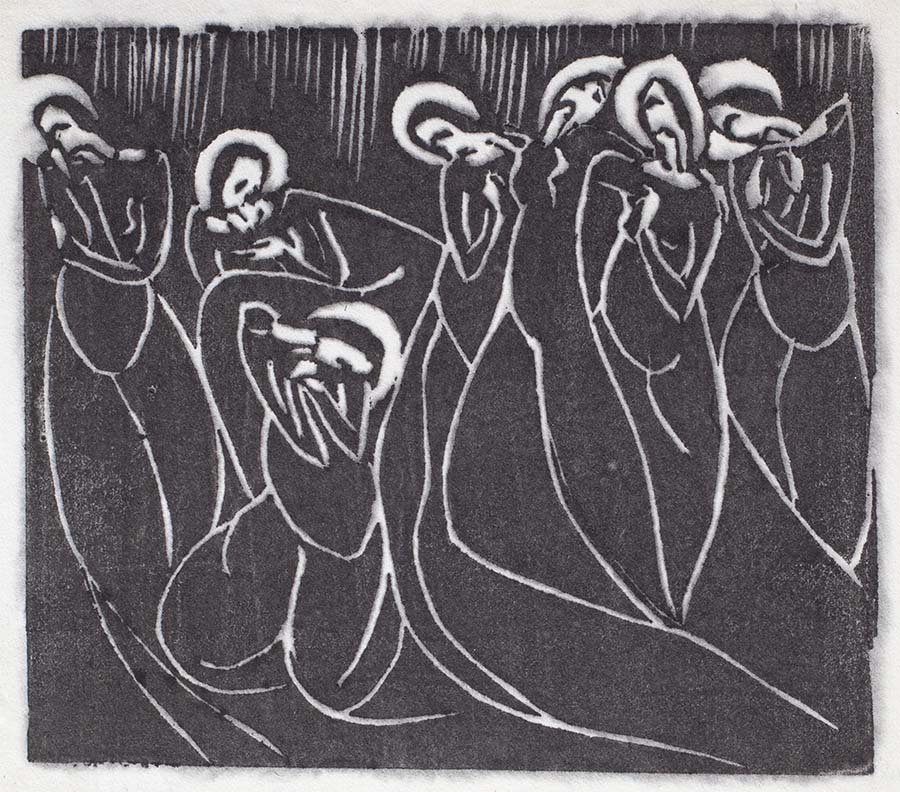 Fig.4 Luise Grimm, Mourning Figures, (c.1920s), ink on paper. Image courtesy of Leicester Museums & Galleries.
Fig.4 Luise Grimm, Mourning Figures, (c.1920s), ink on paper. Image courtesy of Leicester Museums & Galleries.
Finally, there are two Serigraph works; silkscreen printing on paper, by the émigré artist, Hilde Goldschmidt, dated 1964. Goldschmidt was a renowned German expressionist painter and printmaker who was taught by Oskar Kokoschka. She had also exhibited at the Würthle Galerie in Vienna in 1934, where Austrian émigré, Margaret Fisher, had worked. Like the gallery owners Bondi and Fisher, her Jewish heritage meant that she was forced to leave Austria after its annexation [18]. An encounter with Kokoschka in Cornwall in 1941, rekindled her interest in painting. Goldschmidt returned to Austria in 1950 finally settling in Kitzbühel where she died in 1980. One out of the two works in the Leicester German art collection is entitled Kitzbühel, suggesting that the artist may have used her later works to engage with the subject of her return from exile (fig.5) [19]. In the work we see a lone figure – possibly her, perchance returning. The figure is framed against a cluster of buildings, as if to signal a settlement of some kind, once more alluding, perhaps, to the idea of ‘return’ or ‘home’.
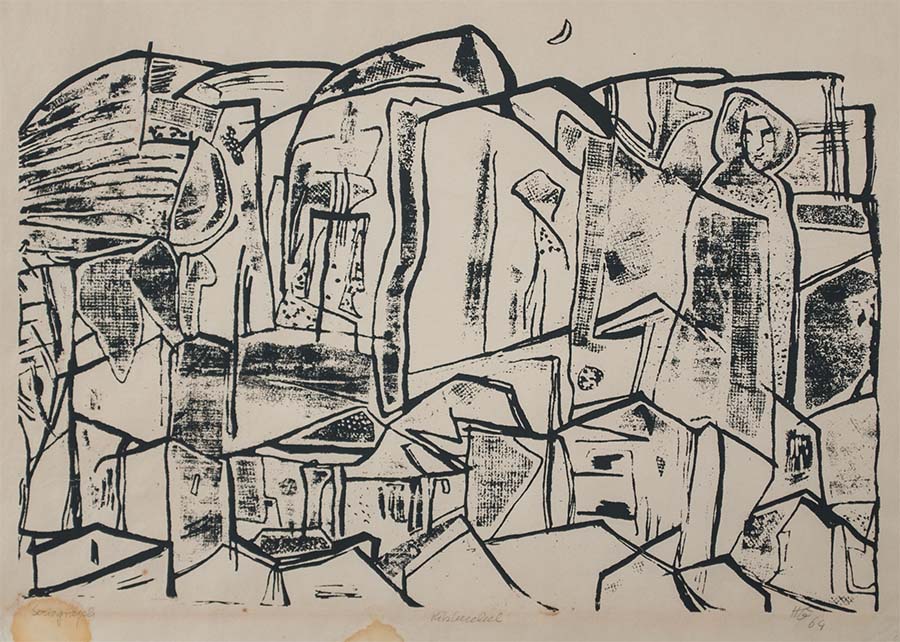 Fig.5 Hilde Goldschmidt, Kitzbühel, (1964), serigraph. Image courtesy of Leicester Museums & Galleries.
Fig.5 Hilde Goldschmidt, Kitzbühel, (1964), serigraph. Image courtesy of Leicester Museums & Galleries.
In 2014, with funding from Arts Council England and Leicester City Council, the German expressionist collection was enhanced with a new dedicated gallery space and website. Since that time, the Leicester Museums have had two sculptures by Margarete Klopfleisch on loan. Despair (1941) shows a female form with her arms raised over her head with abject emotion rendered through the mark-making upon the wooden sculpture. Klopfleisch’s artwork recounts the traumatic experiences of maternal suffering endured through displacement and exile (fig.6). It can be viewed in 360 degrees online [20]. The sculpture was made in response to the loss of a child during pregnancy in an internment camp on the Isle of Man, where the artist was interned from 1940 to 1942. After her release, Klopfleisch worked as a domestic help in London. She returned to Germany in 1960 with her two daughters for a six-week holiday in Dresden. This trip resulted in Klopfleisch remaining permanently in Germany due to the German Democratic Republic (GDR) authorities making it difficult for her to leave. She continued to sculpt until the end of her life irrespective of the fact that the GDR refused to acknowledge her work. It would be until 1981, a year before her death, before she was accepted as a member of the Dresden Artists’ Union. Today Klopfleisch’s sculptures sadly remain under-valued and obscured. Her work nonetheless acts to affirm some of the harrowing events of twentieth-century European history, much like that of her contemporaries, Kollwitz, Ludwig Meidner (1884–1966) and Otto Dix (1891–1969), all of whose works can likewise be found in Leicester’s collection. Originally from Dresden, it was also Dix who encouraged Klopfleisch, who acted as his model, to become an artist [21].
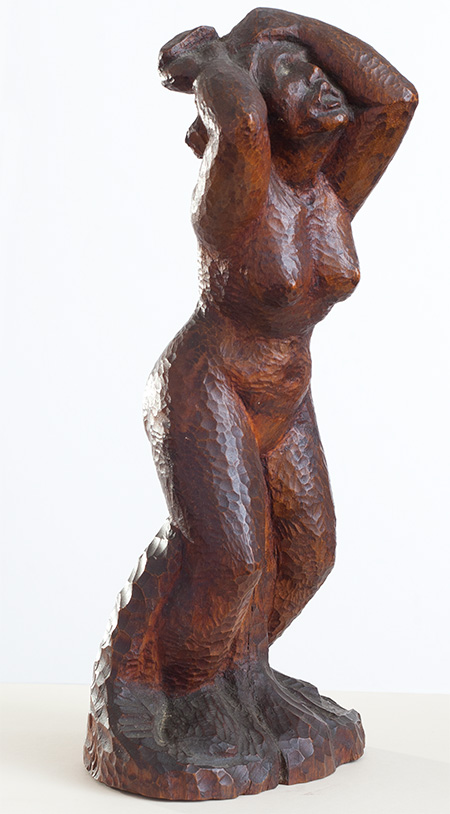 Fig.6 Margarete Klopfleisch Despair, (1941), wood sculpture. ©Lorna Grossner. Image courtesy of Leicester Museums & Galleries.
Fig.6 Margarete Klopfleisch Despair, (1941), wood sculpture. ©Lorna Grossner. Image courtesy of Leicester Museums & Galleries.
To conclude, parts of Leicester’s German art collection are crucial in demonstrating the contribution made by exiled and émigré artists that made their way to Britain from mainland Europe during the 1930s and early 1940s. The initial starting point for the collection derived from the passion and ingenuity of Thekla Hess, who managed to safeguard much of the family’s art collection. The collection also shows the extent to which women artists responded to, and were shaped by, the diverse and traumatic experiences of migration. From this perspective, the collection could seek in the future to showcase more prominently how gender politics and migration intersect in its exhibition spaces. This would mean bringing the works of artists such as Hilde Goldschmidt and Hedwig Marquardt, to the attention of the public more prominently, as they very much deserve to be.
Carolyn V. Bushell is a PhD student at the University of Birmingham. She studied for her MA in Museum Studies at the University of Leicester 2019–2020.
Every attempt has been made to secure copyright and image permissions. Please contact the author and Midlands Art Papers editor for amendments.
Endnotes
[1] See an article exploring these works in detail in a previous MAP issue: https://www.birmingham.ac.uk/schools/lcahm/departments/historyofart/research/projects/map/issue5/lost-leicester-casta-paintings.aspx
[2] Jennifer Harby, BBC News, (2023), https://www.bbc.co.uk/news/uk-england-leicestershire-64968369 accessed 14 May 2023.
[3] Leicester City Council, (2023), https://news.leicester.gov.uk/news-articles/2023/march/museum-s-casta-paintings-confirmed-as-originals/ accessed, 11 May 2023.
[4] Leicester’s German Expressionist Collection. Leicester’s Collection, https://germanexpressionismleicester.org/leicesters-collection/ accessed, 19 May 2023.
[5] Edwin Redslob, ‘Von Weimar nach Europa’ (Berlin, 1972), 155, cited in Christian Weikop, New Perspectives on Brücke Expressionism (Ashgate Publishing, 2011), pp.302–38.
[6] Carolyn Bushell, ‘Women’s Role in the Advocacy of Modern German Art,’ unpublished MA dissertation, School of Museum Studies: University of Leicester (2020) pp.15–16. Available: https://www.academia.edu/45117135/Womens_Role_in_the_Advocacy_of_Modern_German_Art.
[7] Shulamith Behr, ‘Anatomy of the Woman as Collector and Dealer in the Weimar period: Rosa Schapire and Johanna Ey’, in Marsha Meskimmon and Shearer West (eds), Visions of the Neue Frau: Women and the Visual Arts in Weimar Germany (Scholar Press, 1995), pp.96–107.
[8] Shulamith Behr, ‘Dr. Rosa Schapire – Art Historian and Critic in Exile’, in Charmian Brinson, Richard Dove, Anthony Grenville et. al., (eds), Keine Klage über England? Deutsche und Österreichische Exilefahrungen in Großbritannien 1933-1945 (Ludicium, 1998), pp.215–23.
[9] Shulamith Behr, Women Artists in Expressionism. From Empire to Emancipation (Princeton University Press, 2022).
[10] Bushell, ‘Women’s Role’, pp.26–8.
[11] Leicestershire Museums, The Expressionist Revolution in German Art 1872-1933 (William Caple & Company Ltd, 1978), p.113.
[12] Shulamith Behr. Jewish Women’s Archive, ‘Rosa Schapire’, https://jwa.org/encyclopedia/article/schapire-rosa accessed, 31 May 2023.
[13] The British Museum, ‘Collection: Rosa Schapire’, Curators comment, https://www.britishmuseum.org/collection/object/P_1983-0625-44 accessed, 18 May 2023.
[14] Leicestershire Museums, The Expressionist Revolution.
[15] Christian Weikop and Rosa Schapire, Rosa. Eigenartig Grun, Rosa Schapire und Die Expressionisten. With Birgit Ahrens, Shulamith Behr, Leonie Beiersdorf et. al. (MKG Museum Für Kunst Und Gewerbe Hamburg & Hatje Cantz, 2009), p.276.
[16] ‘Luise Grimm’, https://de.wikipedia.org/wiki/Luise_Grimm_(Malerin) accessed, 18 May 2023.
[17] Grimmuseum, https://bpigs.com/spaces/project-spaces/grimmuseum accessed, 31 May 2023.
[18] Ben Uri Gallery & Museum, ‘Hilde Goldschmidt’, https://benuri.org/artists/178-hilde-goldschmidt/biography/, accessed, 18 May 2023.
[19] Leicester’s German Expressionist Collection, ‘Hilde Goldschmidt’, https://germanexpressionismleicester.org/leicesters-collection/artists-and-artworks/hilde-goldschmidt/kitzbeuhel/ accessed, 18 May 2023.
[20] Margarete Klopfleisch, Despair (1941) https://germanexpressionismleicester.org/leicesters-collection/sculptures-360-viewer/despair-wood-by-margarethe-klopfleisch/
[21] Leicester’s German Expressionist Collection. Leicester’s Collection, https://germanexpressionismleicester.org/leicesters-collection/ accessed, 19 May 2023.